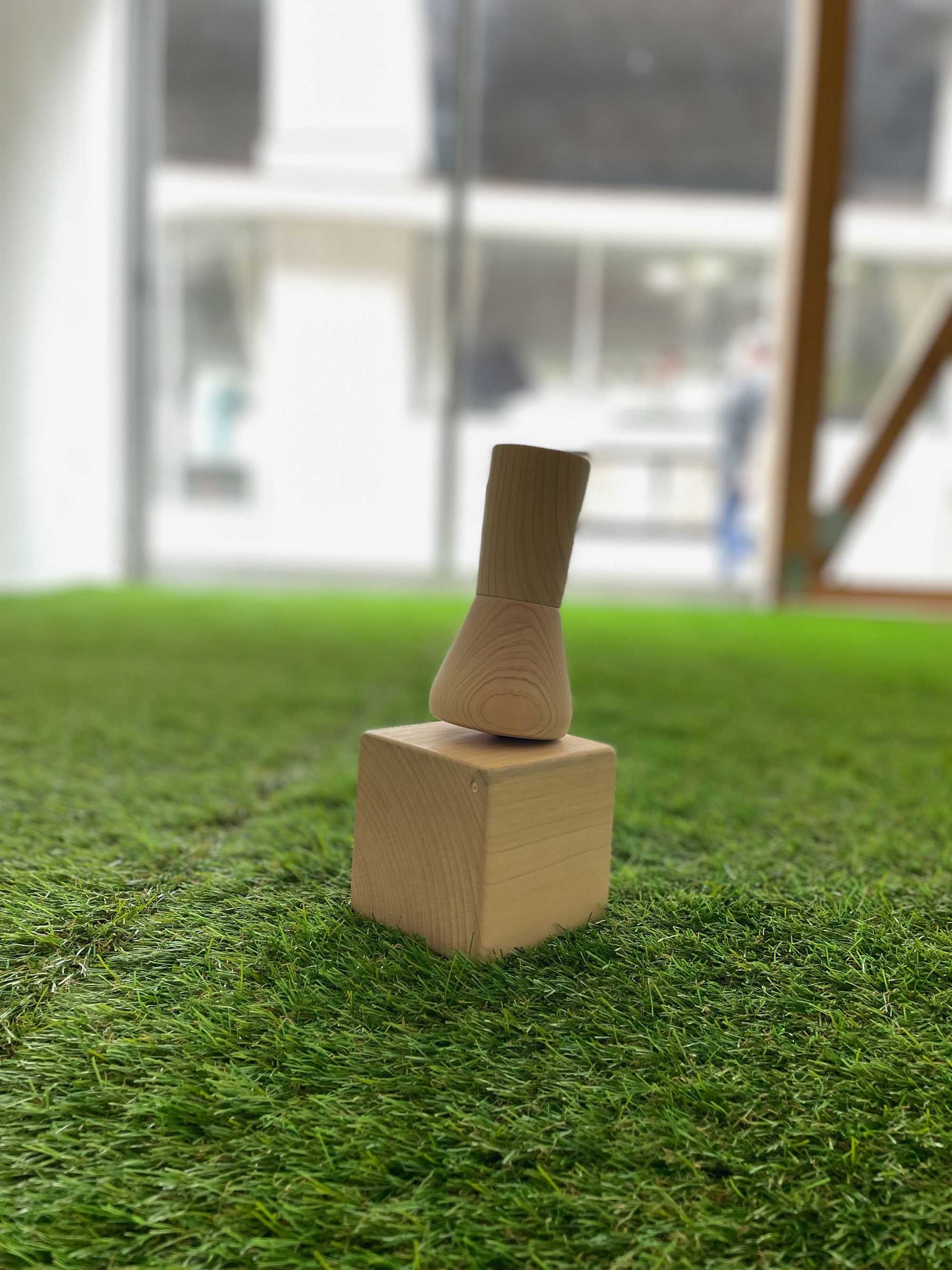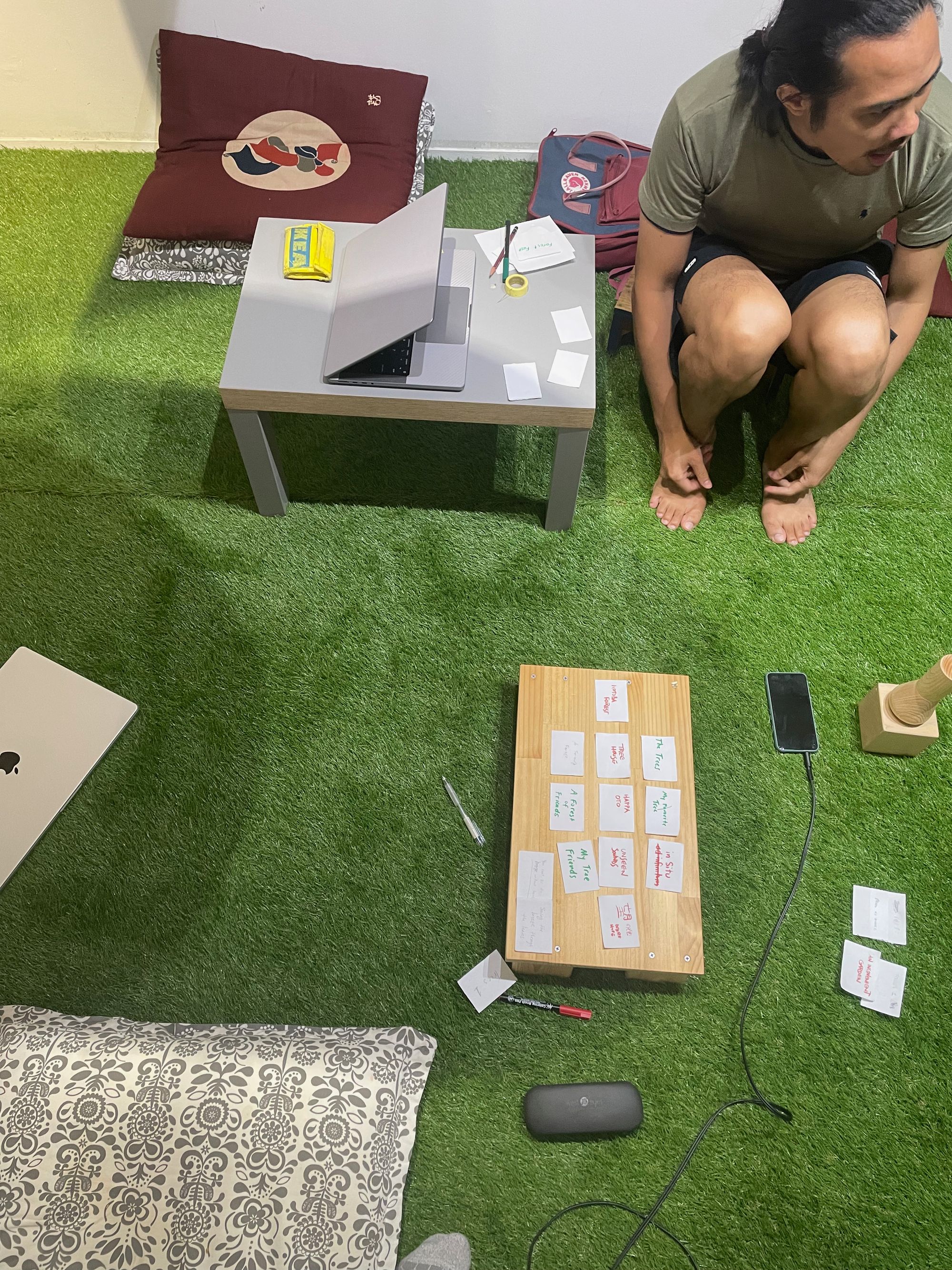Here, in Koganecho

Trembling Aspen | Series_03 Here, in Koganecho | Issue_01
It’s been an unsettled last few weeks, mostly because significant pieces of my plans for the next several months were up in the air. Invitations, visa applications, and collaborations have, for the most part, sifted themselves out. Unsettled things have settled. What can be known, is known. And the rest will come to be without my meddling.
Now that things have settled, it’s time to update you!
Invitations
Big news first. I’ve been offered a long term residency beginning Sept. 2023 going through to Sept. 2024. KMAC* would really like me to stay. I’m excited by the chance to pursue the projects I’ll be telling you about in just a minute, as well as other projects that are emerging.
Visa Applications
One of the great things about being here is the access to infrastructure—studios and galleries. The other great thing is the administrative support. With the untiring help of Natsuko-san, who works in the KAMC office, I have applied for a cultural activities visa, which will allow me to stay in Japan for one year beyond my current visa's expiration, which is end of August. The current plan is to stay through to the end of October 2023, to participate in a fall exhibition—which I’ll tell you about in a moment. I’ll come home for a few months, then head back to Koganecho for the remainder of the one year residency.
Whew. Is that all really happening? A whole cloud of question marks have dissipated, and the above plan is what has emerged, rays of sunshine and all. One remaining question mark is, will I get my visa in time? Let’s see what happens!
Collaborations
I and another artist here, Ralph, from the Philippines, submitted a proposal for a fall exhibition—the Koganecho International Artist Network Exhibition, heretofore known as KIAN. We were successful and have been invited to create a participatory art installation for KIAN (see how much easier that was).
The project will be split into two components, we’ll be doing a smaller indoor installation in the fall of 2023, and a larger more logistically ambitious installation in the spring of 2024. Both installation will centre on the theme of trees, as symbolic of nature. Both are conceptually exploring ritual and ritual’s place in reconnecting us with ourselves, others, nature, and a sense of something larger than oneself. As such, both are stepping stones to the Okuma Project, an outdoor installation among the trees of Fukushima prefecture.

We are situating the fall and spring installations under the participatory art umbrella. I had been haphazardly using the term participatory to refer to the kinds of installations Tasai has been doing for years. Ralph has introduced me to participatory art as a defined discipline. You can go here and hear to read more about it in general, and in relation to Japan respectively. The second link mentions Koganecho and its chief architect Yamano-san, who is considered a pioneer in the world of what is known as art projects in Japan. Art projects, for a variety of reasons, not the least of which may be the begnin sounding name, have been largely missed in global curatorial debates. They are close cousins of participatory art and socially-engaged art. It's exciting to be researching and reading about socially-engaged/participatory art and art projects, as well as Japan's long established and unique place in it all. All while being in residence at KAMC, one of Japan's longest running large scale art projects!
Both the fall 2023 installation and the spring 2024 installation will involve interviewing and running workshops with folks in the neighbourhood. Audio and visual documentation of these activities will be integrated into the installations. For the fall installation, we will be building sculptural resonators through which we will play the audio, and onto which we will project video.
After that last paragraph, I am reminded of a Mary Oliver quote: “Attention without feeling is only a report.” While there has been a great deal of feeling on my part in the midst of all of the above, it seems, upon rereading, rather absent in that last paragraph. Well, I guess this is a report. Is it “only” a report? I don’t know, it feels needed, and from here we can go deeper. One of my heuristics for this newletter was to only write about things that have happened, not things I plan to do. This issue is what happens when what I've been doing is planning. In future issues I will be returning to Ralph, ritual, collaboration and the wonderful world of participatory art. I am trying to find a balance between doing all of this, and writing about it, which I can't say has happened quite to my satisfaction just yet. I'll will keep working on it, for now, I need to continue getting you caught up!
Alongside the Fall and Spring exhibitions, I'm working on a couple of projects which can be seen as prototypes, opportunities to experiment and learn about things related to the our installations for the two exhibitions.
Prototype - Koganecho
My studio space downstairs has become a participatory work-in-progress art installation. (I don’t know what it is yet, or what to call it, that’s my best stab at naming it). The theme is similar to our exhibition installations: nature and ritual, as such it’s an opportunity to nurture community among the artists in residence, learn about how to collaborate together, and allow for unexpected ideas and insights that can be integrated into the other installations. I have brought a few objects into the space: resonators (they’re back!), a lawn (artificial grass which this community’s contributions directly paid for!), an aromatic diffuser, a talking-cube, my little emotional support plant, and an invitation to the Koganecho artists-in-residence.








I’ve asked Dan, a curator from the Philippines who works in the Koganecho office, to help Ralph and I document the installation. If the installation is the ongoing act of creating it, how might we make manifestations of those acts accessible?
People have started adding pieces of furniture, things to draw with. We'll be doing yoga next week. We’ve had a few meetings, a little party, and several ad hoc conversations about art, Koganecho, loneliness, Japan, community, and...well, you get the idea, everything under the sun, as good conversations go. So far, it feels like a success.


Prototype - Yachiyo
Miran (who I interviewed here) and I are pursuing a small participatory art installation in her home town, Yachiyo, in Chiba prefecture. Again, the theme aligns with exhibition installations: conversation and re-connection with self, others, nature and something larger than ourselves. It will involve architecture, furniture and resonators (again!) to create an accessible comforting space for dementia patients. In this instance, Miran and I will be learning how to collaborate together (in Japan! Totally new!). We hope for unexpected ideas and insights that can be integrated into the Fall and Spring installations.
Further, we hope to till the soil of collaboration between artists, designers and architects in Japan and Canada. While all of the projects I've mentioned so far are art projects, we sensed an opportunity to create a non-art-centric event that resonates with and adds to our art-centric installations. Since first arriving in Japan, Miran and I have been discussing the possibility of a symposium related to art/design/architecture + social well-being (again I’m not yet sure what it will be, or what to call it, that’s my best stab at doing so). In recent reading about participatory art I came across the following as an example of participatory art:
The Turner Prize was awarded to Assemble, a ‘collective who work across the fields of art, design and architecture to create projects in tandem with the communities who use and inhabit them.
~ More here
Yes! That sounds exciting to us, and it's exactly the kind of collaborative energy we felt we were tapping into and want to nurture. It's good to know there is precedence for a mashup of exactly art, design and architecture. We’re currently setting up meetings with folks in Yachiyo to discuss the project, exploring the idea of our small installation being a catalyst for like minded artists, designers and architects coming together, sharing knowledge, information and gaining a sense of solidarity. I hesitated to mention this project, its such early days. In the past I might think of meetings as necessary administrative work that leads to making the art. Having embarked on this journey of living my life like a work of art, I think of it all as art. I mean, I really really do. I’m not faking it until it feels true, it feels true. In recent months, here in residency, in Koganecho, living my life like a work of art is less and less conceptual, and more and more a lived and felt reality.
With the breathing room of another whole year here, this project feels like it’s just where it needs to be, and is unfolding at the pace it demands. Slow-is-fast.
One more thing! Kids bazaar!
Based on the success of our previous workshop, Aki and I were invited to participate in this year’s Summer Holiday Kids Bazaar, sponsored by Koganecho Area Management Center. The workshop, based on the children’s activity book Aki and I created together, Let's Make A Scribble Drawing! marks the official launch of the Japanese version of the book おえかきしてみよう!


Let's wrap this up
I’m getting to know some of the artists well. They (and now me!) are here long term. We have a sense of solidarity and support, and community. Within that sense of stability, we are meeting and interacting with artists coming and going from all over the world. It’s not perfect here, nothing is. And it is good, in a deep, rich, healing, energizing way. I am practicing receiving the goodness coming toward me. The installation in my studio is facilitating our sense of community, and I’m glad to be a part of it all. Because I’m part of it, you are part of it. Because you got me here (and you bought the fake lawn in our weird installation work-in-progress thing). Until next time...
*As you may recall KMAC stands for Koganecho Area Management Center, the overarching entity hosting my residency. In future issues, I hope to unpack why the name sounds like it was created by a committee of chemically sedated bureaucrats while attending a convention called Beige: The Forgettable Colour and Why We Love It.
My participation in the Koganecho Artist in Residence program, the art work I create while here, and this very newsletter were all made possible by members of The Mycelium Council. If you enjoy Trembling Aspen, a newsletter about living your life like a work of art, from me, Steve Frost, please consider joining.
